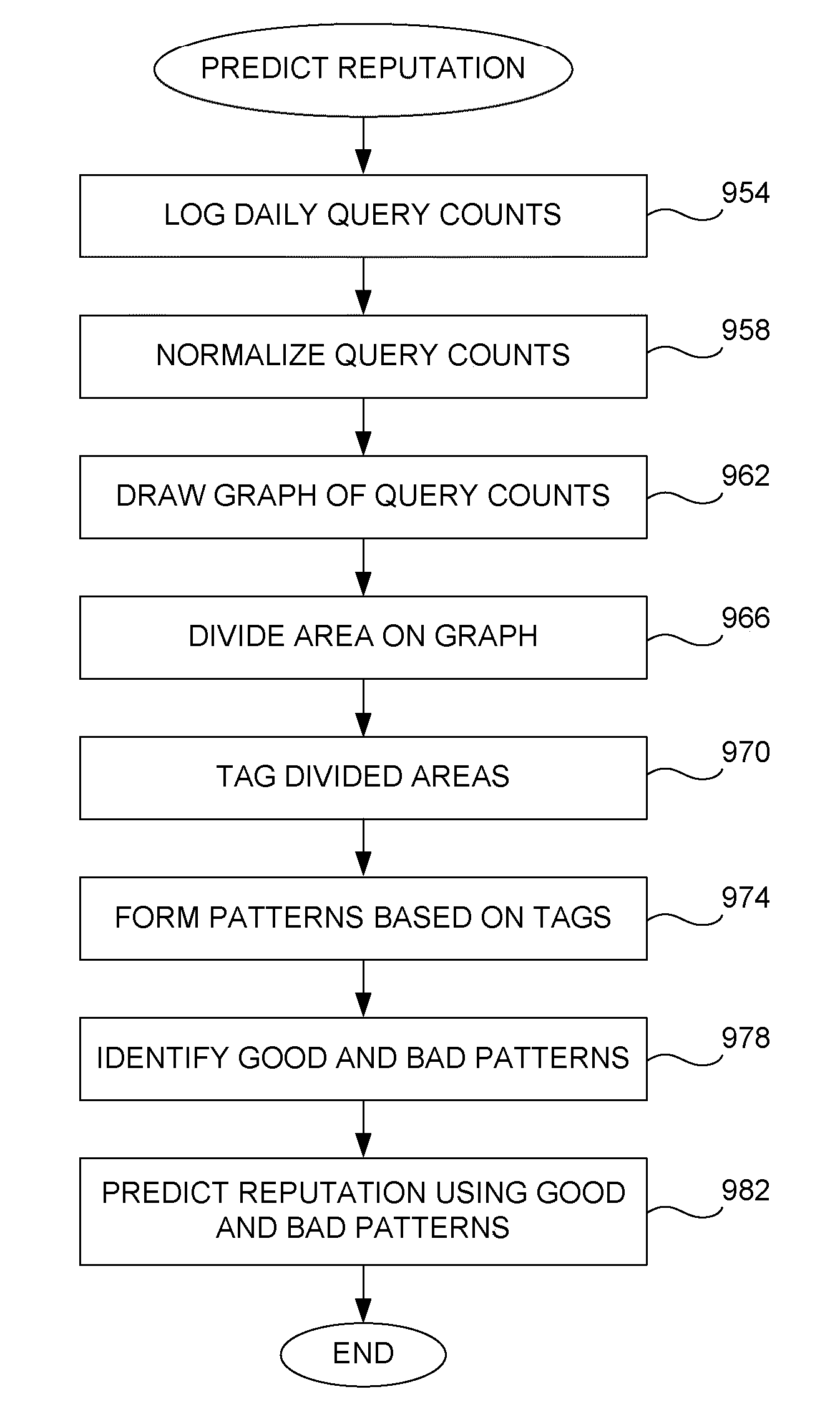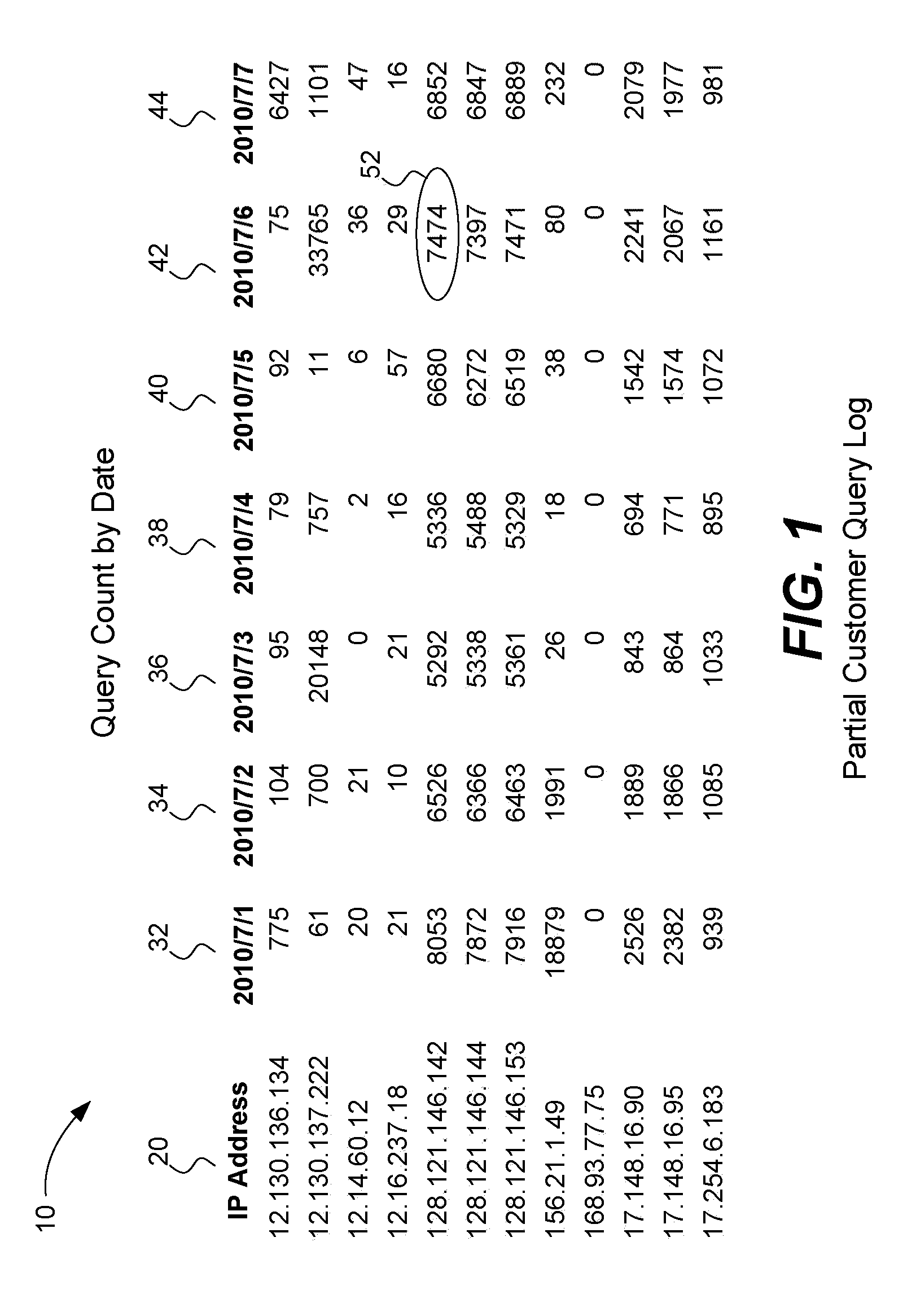Reputation prediction of IP addresses
a technology of reputation prediction and ip address, applied in the field of predicting the reputation of an ip address, can solve the problems of not being able to identify all malicious computers, increasing the problem of electronic mail spam, etc., and achieves the effects of improving efficiency, reducing false positives, and improving detection rates
- Summary
- Abstract
- Description
- Claims
- Application Information
AI Technical Summary
Benefits of technology
Problems solved by technology
Method used
Image
Examples
Embodiment Construction
[0024]As mentioned above, it would be desirable to predict the reputation of an IP address that is otherwise unknown. Such a technique would be useful within an e-mail reputation service (ERS) implemented by an antivirus service provider on behalf of its customers. The below example uses an e-mail reputation service, however the invention is equally applicable to analysis of domains, server computers, URLs—virtually any type of network traffic that can be logged on a per computer basis and then transformed into a sequence as will be described below.
[0025]As known in the art, an IP address (Internet protocol address) is a numerical label assigned to each device (such as a computer or printer) that uses the Internet Protocol for communication over a computer network. While Internet Protocol version 4 has been in use for some time, version 6 is now being deployed and the present invention contemplates the use of any such suitable protocol for an IP address. Static IP addresses refer to...
PUM
 Login to View More
Login to View More Abstract
Description
Claims
Application Information
 Login to View More
Login to View More - R&D
- Intellectual Property
- Life Sciences
- Materials
- Tech Scout
- Unparalleled Data Quality
- Higher Quality Content
- 60% Fewer Hallucinations
Browse by: Latest US Patents, China's latest patents, Technical Efficacy Thesaurus, Application Domain, Technology Topic, Popular Technical Reports.
© 2025 PatSnap. All rights reserved.Legal|Privacy policy|Modern Slavery Act Transparency Statement|Sitemap|About US| Contact US: help@patsnap.com



